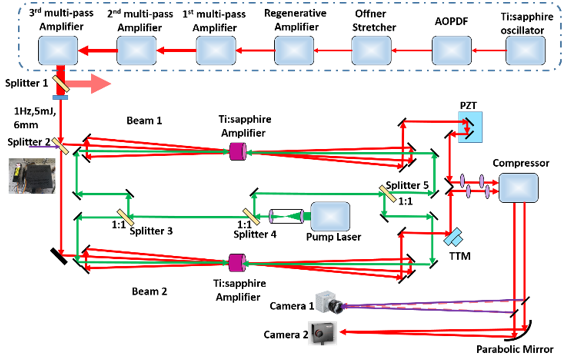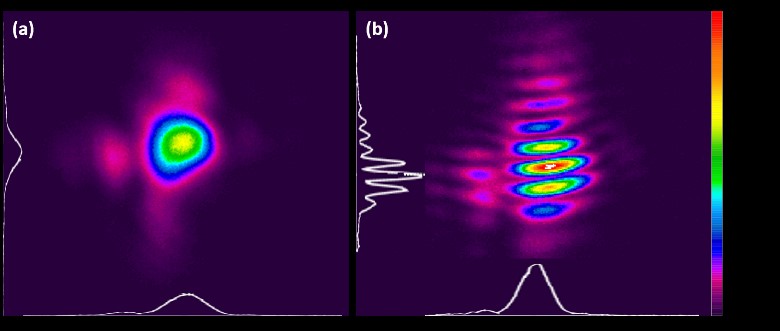Up to now, the output of high-power femtosecond laser facilities has grown from several terawatts (TWs) to 10 PW, which enables the creation of an ultra-intense laser field with the intensity up to 1022 W/cm2 at the focus. Such extreme conditions can be used to explore the mysteries of light-matter interaction in a high field, especially astrophysics in a laboratory, fast ignition, and laser-plasma electron and ion acceleration.
However, the single-beam output capacity is limited by the damage threshold of the optical elements dimension. For this reason, researchers are looking for new solutions to break the restrictions of the single beam for further intense lasers.
Recently, coherent beam combining (CBC) has been one of the promising methods, and Tiled-aperture CBC is believed to be suitable for the combination of ultra-intense ultra-short lasers. Nevertheless, tiled-aperture CBC based on the CPA structure in femtosecond lasers has not been reported. Moreover, the implementation of CBC (tiled-aperture CBC or series-aperture CBC) is almost in high repetition, mostly above 1 KHz. Therefore, it is essential to study tiled-aperture CBC in low repetition for ultra-intense ultra-short lasers.
A research team led by State Key Laboratory of High Field Laser Physics, Shanghai Institute of Optics and Fine Mechanics, Chinese Academy of Sciences, has succeeded in demonstrating the two-beam CBC system based on the Ti:sapphire CPA structure with a repetition of 1 Hz. The experiment result, highlighted as an Editor's Pick, was published in Optics Letters.

Fig. 1. Experiment setup (Image by SIOM)
In this experiment, the repetition of the main laser was 1 Hz. To realize high efficient coherent combining, researchers introduced a continuous reference laser to achieve real-time measurement of the phase error between two beams. The phase error was controlled by changing the optical length of one beam through the PZT device. The maximum pulse energy of the amplified beams were 56.2 mJ (beam 1) and 56.3 mJ (beam 2), respectively. The duration of the two laser beams compressed by the gratings were beam 1 ~49 fs (Fourier-transform limit 45 fs) and beam 2 ~53 fs. The coherent combining efficiency was about 90% and the output beam profile was shown in Fig. 2.
The results show that the reference laser beam was useful for the phase control of CBC. The influence of the Ti:sapphire amplifier was also studied, and they fould that the Ti:sapphire amplifier would not cause extra phase error fluctuation.
This experiment certified the possibility of the CBC based on the Ti:sapphire CPA structure, especially at low repetition. It is of great significance for CBC to be used in ultra-intense and ultra-short laser systems in the future.
This work was supported by the National Natural Science Foundation of China and Strategic Priority Research Program of Chinese Academy of Sciences.

Fig. 2. Beam profiles in the focal plane (Image by SIOM)
Article website:
https://www.osapublishing.org/ol/abstract.cfm?uri=ol-44-17-4379
Contact:
Mr. Cao Yong
General Administrative Office
Shanghai Institute of Optics and Fine Mechanics, CAS
Email: caoyong@siom.ac.cn







